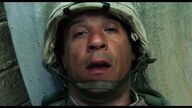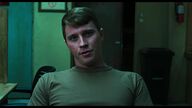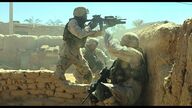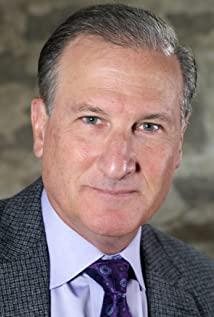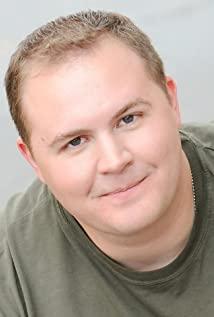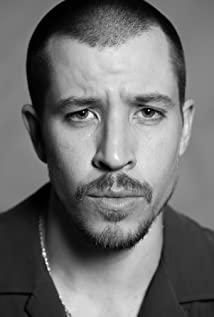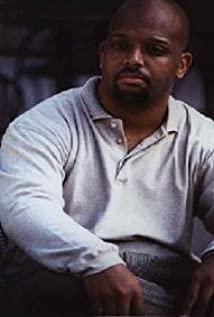after watching the full effect in this wonderful look and costume state of "putting a pair of stereo glasses on your lower half-frame glasses" Version of Billy Lynn.
Probably because I have finally caught up with the fashion and bought such a hard-to-buy ticket, I should say something else, or I will seem so clueless.
So write it.
First of all, the movie is good.
Secondly, I want to talk about what I think Ang Lee has done.
Almost every movie review I've seen is saying this movie is so real.
I don't know how people define "real", but I don't think it is real anyway.
I think "clear" and "real" are two different things, at least on film, at least at 120fps 3d4k.
I don't think I see anyone more "clearly" in real life than I see Billy Lynn's face in the movie, and I might have a chance to challenge that clarity if I wasn't single. But even if I'm not single, it's definitely not that clear for the people I see in my daily life except my girlfriend. If I cheat, I may have a chance to challenge it again...
Okay, let me repeat: I don't I think I can "clearly" see who I see in real life more than I can see Billy Lynn's face in the movie, but does that mean the real-life look isn't real?
Seeing "clearly" and actually being "real" may be the same thing, but not the same thing as being "real" in our eyes.
What sets this film apart from others is the so-called ultra-sharp "120fps 3k4d". But it must be noted that this picture quality is only clear and not the reality itself. The reality is actually a problem that Ang Lee tries to solve in the movie. The decision to make this movie actually represents an attitude of Ang Lee, that is, he believes that with this clarity, he can create a level of authenticity (and possibly drama) that surpasses traditional movies, but what he faces is not only "It's made clearer, so everything is magnified, everything is super realistic, so it gives you a completely different experience" So simple, the difficulty of this clarity makes shooting a movie much bigger than it looks many.
Speaking of reality, if you only look at the three-dimensional part of the 3D, it is indeed very realistic.
But precisely because that part was so realistic, it started to run into problems in other parts.
such as proportions. I don't use the word composition, but actually the first result of this clarity is that it makes it difficult to compose the picture, because the proportion of the subject in the 3d part has to be controlled in the frame. Why, because it's so real that we, at least me, start to feel uncomfortable when we encounter close-ups and even close-ups. It's not dizziness, but a subconscious feeling: "This thing is so realistic, it's like real, but why is he so big?".
Imagine you are sitting in the cinema watching a movie a hundred years later, a close-up of a person's face, everything in the picture is fine and real, but it is a big close-up, how would you feel? I think at least the vast majority of audiences now feel like there's a giant looking into the theater from behind a window.
So the great reality forces us to look at the subject from an objective angle.
Because what we want to represent is not a giant, we want to represent an ordinary person. It can be seen that Billy Lynn has been very restrained on the lens, but after all, it is impossible to compose and shoot in strict accordance with the same proportion, so it still gives me this strange feeling in very few places.
Next, the problem of composition brought about by clarity affects another part.
It is the attitude towards the inner and outer space of the coke, or simply how we watch movies.
I think that the way people use their eyes to view pictures in daily life is different from the logic of video equipment (whether it is a camera or a video camera) to record pictures.
The equipment strictly follows the optical logic, the objects within the depth of field are actually in focus, and the space outside the focus is virtual. And what about the human eye? Think of a scene like this: put an apple and a pear in front of you, and the two fruits are 30 cm away from you and 10 cm away from each other. When you stare at the apple and keep the pear in the peripheral vision, is the pear in focus or out of focus for you?
If you take a photo with a camera, both will be in true focus when the lens is at the same distance from both. But this effect you can't get with the naked eye just by staring at the apple, no matter the distance, the object in the peripheral light is out of focus for the viewer.
I say this to say that most of the time, especially when we are in a state of visual concentration (playing on a mobile phone, reading a book, watching beautiful women on the subway, writing code, drawing, taking selfies), it can give us effective visual information The input range will be smaller than the "in depth of field" range.
But here comes the problem. In traditional movies, the way we solve this problem is precisely by composition.
For example, there is an apple and a pear on the table. If I want to shoot a person looking at the apple and then at the pear, I can take a close-up shot of the apple and then pan the camera to the pear.
However, we can no longer have this kind of composition - such a 3d4k 120fps apple in close-up with such huge details exposed will produce a very eerie effect, which in traditional movies often means looking at it with a microscope or a magnifying glass.
Without talking about apples, can you imagine how Billy Lynn would take a close-up of an eye?
We can't even shoot down and up, not to mention a realistic looking down shot in a realistic movie will make you feel like you're in the sky. I think it's a question of whether it can achieve a stereoscopic effect with a deep depth of field. A long strip rather than a relatively flat thing like a human face sticks out from the screen, so where should it start to defocus?
Taking this example, I want to say that the visual system and camera system of traditional films fail in the face of Billy Lynn's finesse, so there is no doubt that editing will fail, and the play will follow closely. This is a set of dominoes. domino.
Let's start talking about it. Too real makes us lose a lot of control over the aspect ratio. Losing the aspect ratio makes us lose a lot of control over the composition. After each system fails, how can we tell a story to impress the audience?
As said before, most of the time in our lives, the range of visual information input will be smaller than the range of "depth of field".
Therefore, in the case of losing the freedom of composition, the "visual experience in real life" that we can restore on the screen is actually reduced. That's why there is such a weird text message effect in the film, because we can't have a close-up of the phone screen.
The question is, is it a close-up or a weird special effect screen that feels more real to you?
Let's change an example.
In front of the male protagonist, there is a tall girl with a slender chest and buttocks. Is it the 3D male protagonist who swallows his saliva and peeks at the girl, or the 2D subjective perspective on the girl's chest close-up makes you feel more present?
To be honest I don't know.
But I know that's what Ang Lee needs to address before the film starts, and he's going to rebuild, at least to a large extent, a whole system to make a new, different kind of system in this new mode of clarity. to the reality we are used to.
When it comes to truth again, it’s still that point of view. I think truth is the product of synthesis rather than absoluteness. Clarity is. Are Stephen Chow's films more real than Chaplin's? I have no idea.
But I think if the "real" is simply a physical presence, a lot of the psychological effects will be lost for now. It magnifies a certain subtle emotion, but it cannot send the huge emotion to the hearts of people in the way we are already skilled. No upgrades, no close-ups, no sensational music, no special perspective, no stylized lighting and color grading (it seems that many people complain that the color of this film is like HDTV, so if the scale is very Wong Kar Wai's, Lynn stands. How would you feel in front of you?), so we have Billy Lynn and it's hard to use this technique to remake any of those classics we've made.
But we have Billy Lynn already great, maybe not great, but definitely great. It's good looking, and manages to convey some of my subtle emotions that maybe only this technology allows me to experience.
Don't be entangled in the real and the fake anymore, even if a completely realistic picture appears in front of you, there is still a gap that cannot be bridged. That is, once the picture is too realistic and the sense of participation is too strong, you fall from God to a mortal present. You still have to live by the fact that "the screen is bounded" and "you can't be part of the story."
Praise Ang Lee for his exploration. Now it's easy to understand the boy's question from Tsinghua University. Ang Lee's judgment is very accurate. Let's not talk about this work made in a brand-new mode of photography, performance and drama, and only think about the boy's hypothesis. If this is a large-scale "Avatar-like work", regardless of the cost, the alien fleet with strong three-dimensional realism is flying in front of you, and you can't even give a panoramic view of the spaceship (you will definitely feel floating in front of you. with a toy), which one would you shoot if it were?
By the way, this kind of technology with such a clear look and feel but like a drama really makes my heart skip a beat: what about using it to shoot cross talk?
View more about Billy Lynn's Long Halftime Walk reviews



